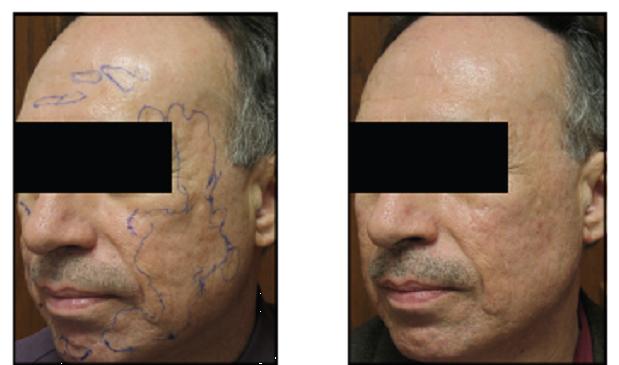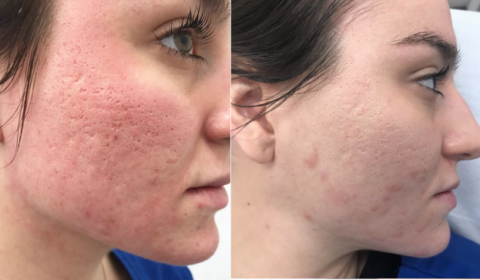Top Acne Treatment for Sensitive Skin: Mild Solutions for Clear Skin
Top Acne Treatment for Sensitive Skin: Mild Solutions for Clear Skin
Blog Article
Exploring Skin Problem: Determining and Treating Acne Scars for Healthier Skin
Acne marks represent a considerable problem for individuals looking for to keep healthy skin, as they can influence both look and self-esteem. Comprehending the various kinds of scars, from atrophic to hypertrophic, is necessary for identifying suitable therapy options.
Recognizing Acne Scars

The body's all-natural recovery process can cause either atrophic scars, which look like clinical depressions in the skin, or hypertrophic scars, which are raised and result from overproduction of collagen. In addition, the mental toll of acne scars need to not be ignored; many people report feelings of shame, stress and anxiety, and lowered self-confidence. This emotional burden can impact social interactions and overall high quality of life.
Dealing with acne scars needs a detailed understanding of their formation and effect. Recognition of the possibility for long-term consequences related to without treatment marks can motivate people to look for proper therapies. Early intervention and effective monitoring methods can substantially improve skin appearance and enhance mental durability, stressing the relevance of understanding the intricacies bordering acne scars.
Sorts Of Acne Marks
Acne marks can be categorized right into distinct types, each showing special characteristics and calling for certain therapy techniques. acne scars treatment. The main kinds of acne marks consist of atrophic, hypertrophic, and keloid scars

Hypertrophic scars, in contrast, are elevated over the skin level and are the outcome of excessive collagen production during the recovery procedure. They commonly continue to be within the boundaries of the initial acne sore. Keloid scars are similar but expand beyond the original injury site, forming bigger, elevated locations that can be itchy or unpleasant.
Understanding these sorts of scars is vital for selecting suitable treatment alternatives. Different scars may respond better to particular treatments, such as laser treatments, fillers, or medical treatments, emphasizing the significance of a customized method to acne scar administration.
Recognizing Your Marks
When examining the appearance of your skin, it is essential to properly identify the sort of scars present, as this will certainly educate one of the most reliable treatment technique. Acne scars generally fall under two categories: hypertrophic and atrophic marks. Atrophic scars, which are the most common, look like clinical depressions or impressions on the skin. These can further be classified right into ice-pick marks, boxcar scars, and rolling marks, each showing unique qualities and requiring various approaches for evaluation.
Hypertrophic scars, on the various other hand, are raised and take place because of extreme collagen manufacturing during the recovery process. Recognizing the particular features of your scars-- such as structure, depth, and size-- is vital for correct recognition (acne treatment for sensitive skin). In addition, take into consideration the distribution of marks throughout your skin, as this can indicate the seriousness and duration of the acne condition
Engaging with a skin doctor can provide beneficial insights into the nature of your marks, assisting in the distinction in between numerous kinds. A detailed understanding of your scars will ultimately bring about a more tailored and reliable therapy plan, making sure a more clear and much healthier complexion.
Therapy Choices Readily Available
Identifying the particular kind of acne marks existing on your skin lays the foundation for discovering reliable treatment choices. Common sorts of acne marks consist of atrophic (clinically depressed), hypertrophic (raised), and post-inflammatory erythema.
For atrophic marks, alternatives such as chemical peels, microneedling, and laser resurfacing are extensively used. Chemical peels make use of acids to eliminate the outer layer of skin, promoting brand-new cell development. Microneedling involves small needles that develop micro-injuries, stimulating collagen production. Laser resurfacing targets harmed skin cells, improving appearance and tone.
Hypertrophic scars can be treated with corticosteroid shots to squash the scar or laser treatment to lower redness and enhance look. Silicone gel sheets and stress dressings may additionally help in taking care of raised scars.
On top of that, dermal fillers can temporarily complete anxieties from atrophic scars, while medical excision might be ideal for serious cases. Each treatment alternative has its advantages and considerations, making it vital to seek advice from with a skin doctor. They can provide personalized referrals based upon the kind and intensity of your marks, along with your skin kind and overall health.
Tips for Prevention
Efficient prevention methods can substantially reduce the chance of developing acne scars. Making use of non-comedogenic products aids stop clogged pores, which can intensify acne.
Staying clear of the desire to stand out or select acne sores is essential, as this can bring about much deeper skin damages and boost the danger of scarring. Instead, consider making use of a cool compress or over the counter therapies to minimize swelling and inflammation.
Sunlight protection is one more crucial aspect of prevention; ultraviolet (UV) rays can darken marks and prevent the healing process. Applying a broad-spectrum sunscreen with a minimum of SPF 30 daily can discover here secure the skin and promote also healing.
Finally, maintaining a balanced diet plan abundant in anti-oxidants, vitamins, and minerals supports skin wellness and recovery. Staying hydrated and handling stress and anxiety levels can likewise play a significant function in minimizing acne flare-ups. By executing these methods, people can substantially decrease their opportunities of developing acne scars.
Conclusion
In conclusion, understanding and determining acne marks is necessary for efficient therapy and accomplishing healthier skin. Numerous kinds of acne marks, consisting of hypertrophic and atrophic marks, require certain interventions customized to specific needs.
The body's natural recovery procedure can result in either atrophic marks, which show up as clinical depressions in the skin, or hypertrophic marks, which are increased and result from overflow of collagen. They are additional split into 3 subtypes: ice pick scars, boxcar marks, and rolling scars. Acne marks usually fall into two categories: atrophic and hypertrophic scars. These can better be categorized into ice-pick scars, boxcar marks, and rolling scars, each displaying distinct characteristics and requiring various techniques for analysis.
Different types of acne scars, consisting like it of atrophic hop over to these guys and hypertrophic scars, demand certain interventions customized to private needs.
Report this page